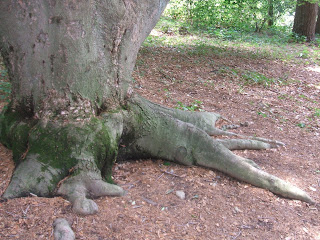Arnold Arboretum
I keep a mental list of dream gardens that I mean to visit some day: The Brooklyn Botanical Garden, the National Arboretum, the Missouri Botanical Garden. In April, I visited the granddaddy of great gardens, Kew Gardens in London. And last week in Boston, I finally got to see the Arnold Arboretum.
I rode the subway to the end of the Orange Line and entered the Arnold Arboretum at the Forest Hills gate, near three ponds, the sunniest part of the arboretum. I passed the first pond, surrounded by small trees and shrubs.
The clear water reflected a generous stand of native Joe Pye weed in full bloom.
The second pond was covered in a rich green patina. In the distance a blue egret stood completely still in the water until I was convinced it was a sculpture.
When I walked past the pond a second time, the egret slowly turned its head.
Near the ponds was a moist meadow with a succession of blooms from native wildflowers. On this hot August afternoon, native goldenrod, liatris and Joe Pye bloomed bright yellow and pink.
Most of the arboretum was shady, with mature trees.
This viburnum was red with fruit.
But the fruit of the smoke tree was the most striking.
There were trees with interesting trunks
and branches
and roots
and leaves.
The Arnold Arboretum is for plant lovers. There are no garden beds with eye catching displays of annuals, no playgrounds for children and no snack bars for hungry people. The visitors center has books and maps, but no bottled water. This arboretum is for people who want to experience trees from around the world or to stroll through a mature forest setting.













































